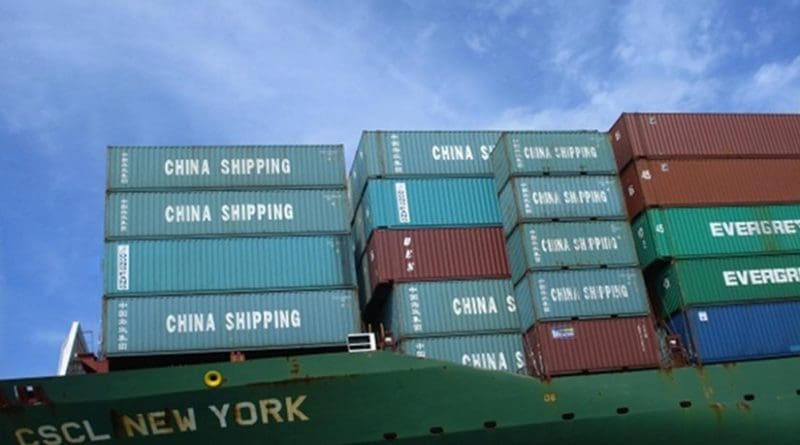India’s Free-Trade Agreement Blues: No Alternative To Engaging China – Analysis
By N Chandra Mohan*
The threat of trade protectionism is fast rising as the world economy hovers on the brink of a recession. The US has pulled out of the Trans-Pacific Partnership. A trade war between the US and China is in prospect. Brexit is in the air.
India has also taken an inward turn in pulling out of the Regional Comprehensive Economic Partnership (RCEP), a grouping that comprises 10 members of the Association of Southeast Asian Nations (ASEAN) together with China, Japan, South Korea, Australia and New Zealand. It is one of the largest regional trading blocs in the making, accounting for 30% of the world’s population and 29% of global GDP in 2018.
On the face of it, this decision represents a setback to India’s ambitions in the Indo-Pacific. In terms of geo-economics, this has entailed engaging with a “broader” Asia that allows trade, investments to flow freely through this prosperous region.
The basis for this broad-based engagement is India’s free-trade agreement (FTA) with the ASEAN. India has also entered into comprehensive economic partnership agreements with Japan and South Korea. China is one of its largest partners.
But this process of integration appears to be constrained by worries over ballooning trade deficits with all these trading partners and, most importantly, China.
India’s reluctance to participate in RCEP is very much in line with its decision to review existing FTAs with ASEAN, Japan and South Korea. A relook of the FTA with South Korea, which began three years ago, is being fast-tracked.
A joint working group is discussing issues to be addressed in India’s FTA with Japan. Domestic stakeholders like farmers and India Inc remain far from gung-ho about these agreements. Industry is worried that China can inundate the domestic market with cheaper steel, chemicals and electrical goods, thanks to surplus capacities.
India’s trading stance thus has been defensive instead of seizing the emerging opportunities, At a time when India’s GDP growth has decelerated since 2016-17, it might appear that its free-trade blues are warranted. But its ardour for such agreements has somewhat diminished also due to its protectionist regime on a range of manufacturing products and agricultural commodities.
On manufactured products, average tariffs have risen from 11% in 2017 to 14% in 2018. For agricultural commodities, they were hiked from 33% to 39% over this period.
“For the first time, the direction of India’s tariff liberalisation had been reversed” since the reforms era began in the early 1990s, according to Professor Biswajit Dhar of the Jawaharlal Nehru University.
India cannot succeed in the Indo-Pacific unless it makes its FTAs with ASEAN, Japan and South Korea work to its advantage. It must develop a nuanced approach while dealing with China, which accounts for more than half the combined GDP of RCEP members of USD 24.6 trillion.
No doubt, India is apprehensive of being part of a regional trade architecture dominated by the dragon. But there is no alternative to engaging China on trade and investments to reduce its massive bilateral trade deficit of USD 57.86 billion in 2018.
China is also the location for many global and regional supply chains that India seeks to participate in. Serious efforts, therefore, are necessary to diversify India’s exports to include intermediates, parts and components to China. India exported only 2.7% of its parts and components to China, while it imported one-fifths of its sectoral requirements from there according to a report by the think-tank, Research Information System for Developing Countries (RIS).
India’s trade deficit can be addressed in part by stepping up parts and components or what are termed network exports to participate more fully in global and regional value chains that assemble their products in the Chinese mainland like Apple’s iPhone, for instance.
Admittedly, this is easier said than done when global trade is in the doldrums and powerful nations are resorting to inward-looking trade policies. India has opted out of RCEP for now but it must reconsider joining up if its concerns are accommodated.
India’s desire to engage with the Indo-Pacific will be truly furthered if it also improves connectivity with the region through road, rail, air and shipping services. Without connectivity, India’s freer trade with Asia will be sub-optimal. If it cannot utilize its FTAs with ASEAN and others work as per its “national interests”, it’s unlikely to be more successful in exploring similar agreements with the US and European Union.
*About the author: The writer is an economics and business commentator based in New Delhi
Source: This article was published by South Asia Monitor

